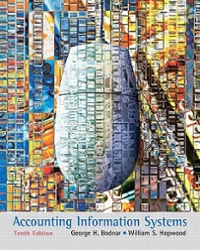Question
ACCT 6610 Individual Assignment Analysis of Nature's Sunshine Stock Compensation Total Points = 20 points Learning Objectives The purpose of this assignment is to ensure
ACCT 6610
Individual Assignment
Analysis of Nature's Sunshine Stock Compensation
Total Points = 20 points
Learning Objectives
The purpose of this assignment is to ensure the student is able to:
Locate and interpret a stock compensation footnote.
Manipulate the assumptions in the black-scholes option pricing model.
Consider the impact of stock compensation on motives and opportunities for financial reporting manipulation.
Understand the strengths and weakness of accounting for stock based compensation.
The following questions pertain to Nature Sunshine's 2012 financial statements. You must show details of your computations to be eligible for partial credit. Bullet point form answers are acceptable. Answer questions for 2012 only, unless specifically asked to do otherwise.
If necessary, assume a tax rate of 35%.
1.List the plans that authorized Nature's Sunshine to grant stock awards during 2012. For each plan, list the types of awards the plan allows for? (1 point)
2.Nature's Sunshine's outstanding stock options include three different types of awards. What are the vesting requirements of each type? (1 point)
3.What classes of individuals received stock options during 2012 and 2011? (1 point)
4.How might the grant of the type of options described in question 2 to the individuals noted in question 3 impact motives to manipulate financial disclosures? Explain, including what ratios and thresholds for these ratios you might want to watch out for for evidence of manipulation going forward. (1 point)
5.What was the total fair value of options granted during 2012? (1 point)
6.Using the option pricing worksheet and Nature's Sunshine's 2012 assumptions estimate the weighted-average Black Scholes fair value of Nature's Sunshine's options granted in 2012. Use the mid-point of assumptions stated as a range. What is Nature's Sunshine's estimate of the weighted-average Black-Scholes fair value of options granted? Your number will not be the same, but you should be able to come within 5% of their figure. (Please include a printout of your spreadsheet.) (2 points)
7.How does Nature's Sunshine estimate the risk-free rate, expected option life and volatility assumptions for use in the Black-Scholes option pricing model? What assumption did you make about the weighted-average exercise price and current stock price on the grant date? (2 points)
8.In question 4 you discussed the impact Nature's Sunshine's stock options might have on managers' motives for financial reporting manipulation. What opportunities do stock options provide Nature's Sunshine's managers for manipulating stock option expense? (1 point)
9.What is the amount of share-based compensation expense from stock options? What was the total fair value of options granted during the year (your answer to question 5)? Why is the expense different from the fair value of options granted during the year? (1 point)
10.What was the total fair value of restricted stock units granted during 2012? What model did Nature's Sunshine use to estimate the per share fair value of the restricted stock units? What does Nature's Sunshine say about this model? Use the weighted-average stock price applicable to the options granted during 2012 to estimate how much the total fair value of the restricted stock units was reduced by the use of the model Nature's Sunshine used to estimate the per share fair value of the restricted stock units. (2 points)
11.What is the amount of share-based compensation expense from restricted stock units? What is the amount of share-based compensation expense from restricted stock units and stock options? (2 points)
12.Compute stock compensation expense as a percentage of Nature's Sunshine's pre-tax income before stock compensation expense. Is Nature's Sunshine's stock compensation expense a material expense? (Generally an expense greater than 5% income is considered material.) (2 points)
13.How does the Black-Scholes fair value on the grant date relate to the economic wealth ultimately transferred to employees upon exercise (i.e. the intrinsic value on the exercise date)? (1 point)
14.Assume the options granted during 2012 are exercised at some future date when the stock price is $20.50. Compute the total intrinsic value of these options upon exercise? What is the total amount expensed for these options over the life of the options? How much does the total amount expensed overstate or understate the cost of the options as measured by the intrinsic value upon exercise? Be sure to indicate whether expense is understated or overstated. (2 points)
Step by Step Solution
There are 3 Steps involved in it
Step: 1

Get Instant Access to Expert-Tailored Solutions
See step-by-step solutions with expert insights and AI powered tools for academic success
Step: 2

Step: 3

Ace Your Homework with AI
Get the answers you need in no time with our AI-driven, step-by-step assistance
Get Started


